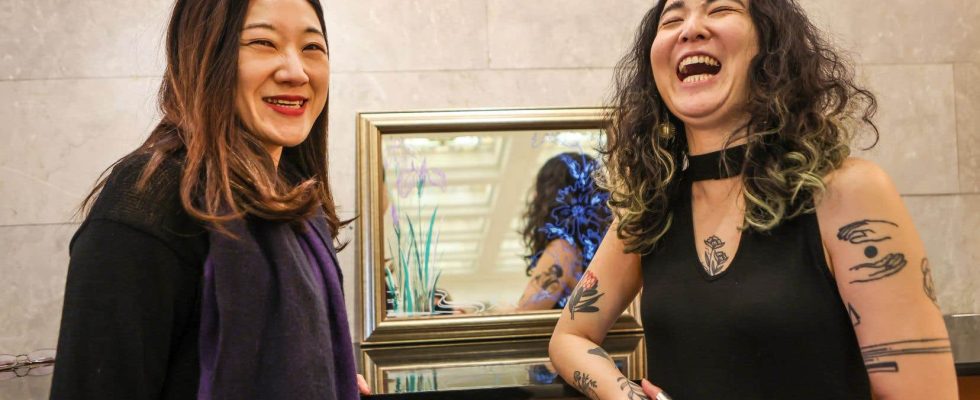“‘Bijin’ is a very old Japanese term that translates beauty in a person, but it is found especially in women,” explains Amandine Davre, founder of the Montreal gallery Artasiam and curator of Bijin: Japanese Beauty organized by the Asia Access Festival. Omnipresent since the IXe century in the culture of the Empire of the Rising Sun, the bijin is often represented by an idealized image of an elegant woman, with a uniform face, soft and harmonious features, dressed in beautiful kimonos… things are not changing today? Is this ideal of the past still valid? asks the gallery owner in her exhibition.
Artists now based in Quebec Yukiko Hashizume and Kaori Izumiya have both been selected by Amandine Davre precisely because they work on this image. “Kaori wants to update the vision of women and the standards of beauty imposed on them, while in Yukiko’s works we find the essence of the bijin supported by a traditional technique”, she points out.
“For me, the concept of bijin is a bit strange… in French we can use the word ‘beauty’ for many things, but, in Japanese, ‘bijin’ relates to appearance”, admits Kaori Izumiya straight away. , who was convinced to participate in the exhibition because she would be free to affirm her own interpretation of the bijin, “more contemporary” and without constraint. Her prints thus attest to strong, charismatic women, with strong opinions and who do what they want. But, above all, these women, even if they wear make-up, do not try to hide the imperfections of their skin with their redness, pimples, etc. “I like to draw what we don’t necessarily expect of women, so who don’t smile and are rather grimacing,” says the artist.
His painting Equality, a western-inspired yō-ga oil painting reminiscent of those by Egon Schiele, where one can observe a topless tattooed woman, is certainly Bijin’s most political canvas: beauty at the Japanese. “I don’t specifically claim feminist art, because the process is natural for me”, emphasizes the one for whom the color red is a vector for transmitting emotions throughout the exhibition.
For her part, Yukiko Hashizume offers portraits of women who take up the specific codes of the bijin from the nihonga artistic movement: almond-shaped eyes, exposed neck, fine lines of the nose and colorful kimonos… and very flowery. In the traditional Japanese art of nihonga, which was theorized in the 19e century, beginners will indeed perfect their practice thanks to flowers, plants, insects and everything that is found in nature. “When I was in Japan, I drew what was in my little garden. Before drawing women, I started with flowers,” says the artist. For Yukiko Hashizume, flowers are, in fact, inherent in the notion of beauty.
Sea, mountains, flowers… At Kaori Izumiya also the elements of nature are also part of the pictorial language. “People all know the famous wave of Hokusai, but there are others. It’s not just that one, ”she notes. Influenced and inspired by the culture of her country of origin, she does not hesitate to embellish her works with ramen, sushi, taiyaki and other melon drinks – which her female characters devour without hesitation. “In fact, I like to paint the beauty of what it lacks”, she confides finally. And Amandine Davre concludes: “Bijin: Japanese beauty was designed to make the public understand that there is no single stereotypical beauty of the bijin. If you pay attention, beauty is everywhere and it is subjective. »
Festival Accès Asie mobilized
